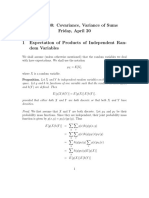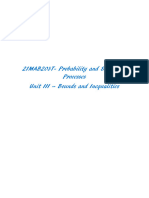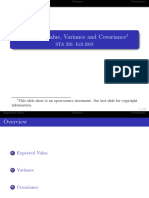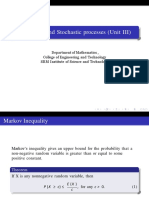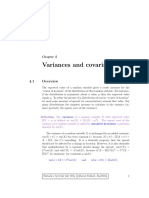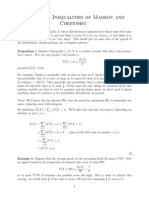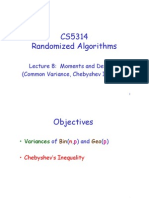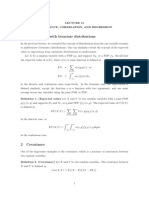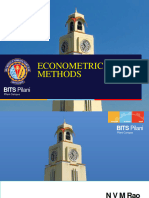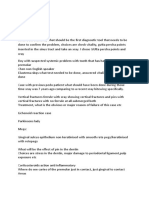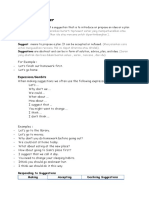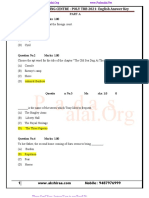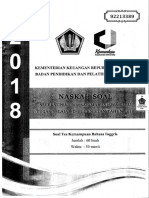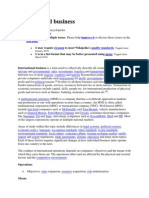0% found this document useful (0 votes)
70 views3 pagesApril 1st, 2016 - Lecture: Covariance and Chebyshev's Inequality
The document summarizes key topics from a lecture on covariance and Chebyshev's inequality:
1) It defines covariance and provides intuition for when random variables have positive, negative, or zero covariance based on whether their values swing together, opposite, or independently.
2) It gives the formula for covariance in terms of expected values and provides an example where covariance is positive and another where it is negative.
3) It introduces Chebyshev's inequality and how it provides tail bounds for a random variable using its expected value and variance.
Uploaded by
shamaas hussainCopyright
© © All Rights Reserved
We take content rights seriously. If you suspect this is your content, claim it here.
Available Formats
Download as DOCX, PDF, TXT or read online on Scribd
0% found this document useful (0 votes)
70 views3 pagesApril 1st, 2016 - Lecture: Covariance and Chebyshev's Inequality
The document summarizes key topics from a lecture on covariance and Chebyshev's inequality:
1) It defines covariance and provides intuition for when random variables have positive, negative, or zero covariance based on whether their values swing together, opposite, or independently.
2) It gives the formula for covariance in terms of expected values and provides an example where covariance is positive and another where it is negative.
3) It introduces Chebyshev's inequality and how it provides tail bounds for a random variable using its expected value and variance.
Uploaded by
shamaas hussainCopyright
© © All Rights Reserved
We take content rights seriously. If you suspect this is your content, claim it here.
Available Formats
Download as DOCX, PDF, TXT or read online on Scribd
/ 3



